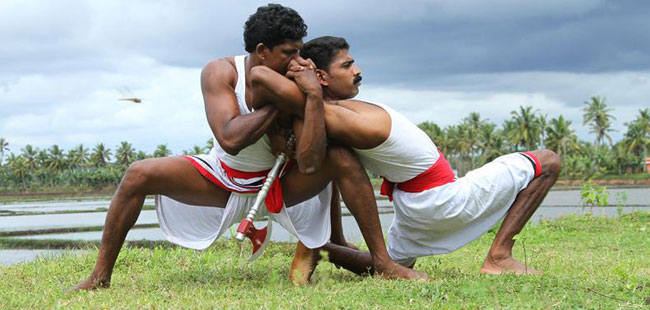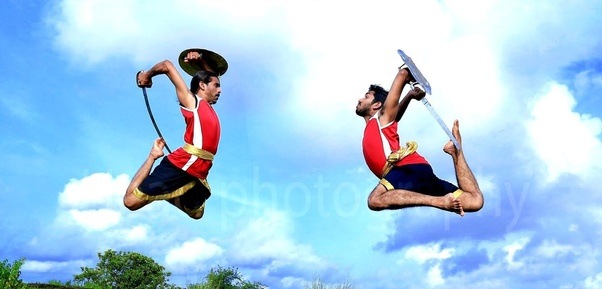Kalaripayattu Martial Arts – The Ancient Battle Form
Kalaripayattu History
Kalaripayattu fight is one of the famous ancient Indian martial art forms. The art originated as a style in Kerala, South India. The word Kalari was narrated in the Tamil Sangam Literature and lasted from 300 BCE to 300 CE. The word Kalarippayattu means the battlefield or combat arena. During the Sangam era, this Kalari Martial art was used in the wars. Every warrior received this martial art as military training. The form of the fight was initially practised in Kerala and Southern parts of Tamil Nadu. This is one of the oldest surviving fighting systems in the world.

This ancient Kalari was formed before 3 rd century BC. and is also discussed in the Akananuru and Purananuru. In the Sangam era, these books described using Kalaripayattu weapons like spears, swords, shields and samba. Kalari, which means martial feat, this word appears in the verses of Purananuru and is described in Akam.
Kalaripayattu Basic Steps
During the Sangam era, every kingdom citizen received regular military training like horse and elephant riding and practising targets. Everyone specialized in at least using weapons like swords, shields and bow and arrow throwing and regularly practised the Kalaripayattu Basic steps. In the 2nd century AD, the Sangam literature book ‘Silappadikkaram’ described the silambam staff and their importance in defying enemies. These combat techniques were introduced in the early period of the Sangam era. These techniques became very famous as ancient martial art. This martial art is composed by adopting the Yoga Sutras of Patanjali and the finger movements of the nata dancers. Especially most of the South Asian fighting styles were closely connected to Yoga, dance and performing arts.
Kalaripayattu Techniques

Kathakali dance movements also have some similarities with this martial art. The dancers who learned the basic steps of martial art can perform the Kathakali dance with a magnificent performance. Another vela kali art form was inspired by Kalari and performed by the warriors in the Hindu epic Mahabharata. Still, this performance art is part of the Southern part of Kerala. The Chhau dance artists well learned this martial art profoundly. Anyway, still, some Indian classical dance schools are giving practice to the dancers in Kalari to bring good performance in the dances. Up to the 6th century, the soldiers learned this martial art’s ancient exercises and techniques. Later in the 6th-century new warfare techniques were introduced in this martial art.
Kalaripayattu Classes
The classes are different according to the geographical position in Kerala. The art is in the Northern style in the Malabar region, North Kerala. In inner Kerala, this art follows a central manner. The Thiruvitankoor warriors follow the Southern style. This fight performance follows kicks, strikes, grappling and flexible movements. Even the Northern Kalaripayattu combined loose activities like Jumps and Weapons training. The Southern Kalaripayattu follow the Adi Murai style, based on complex impact techniques. The warriors used this art form mostly with empty hands. The Northern Kalaripayattu fight has more flexible movements, similar to the Kathakali dance movements. Most believe that the Vedic sage Agastya was the founder and patron of this fight.